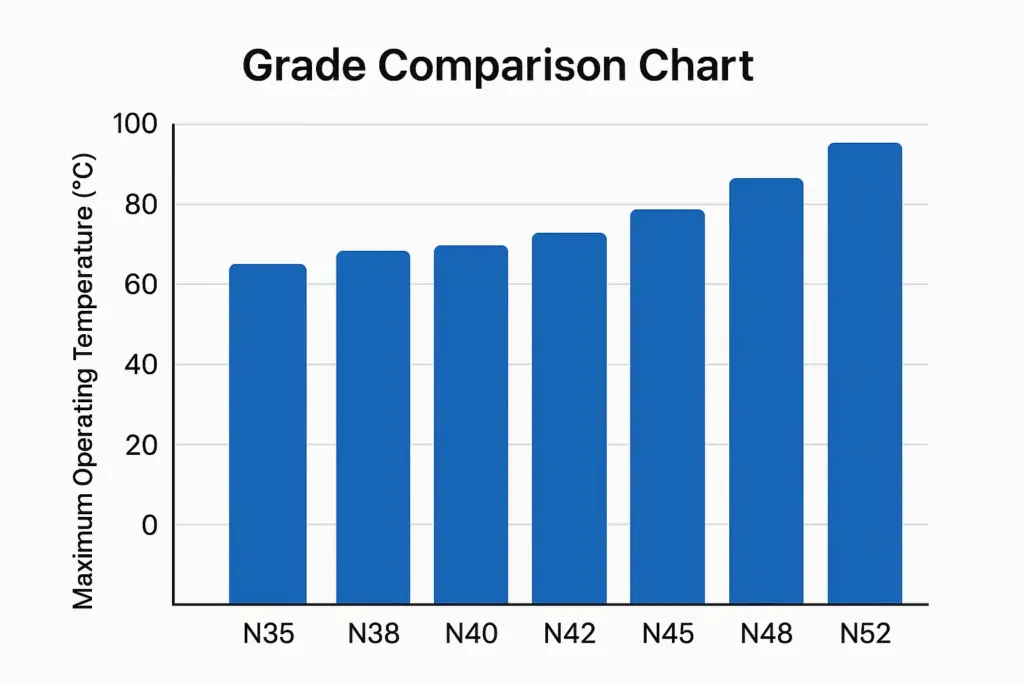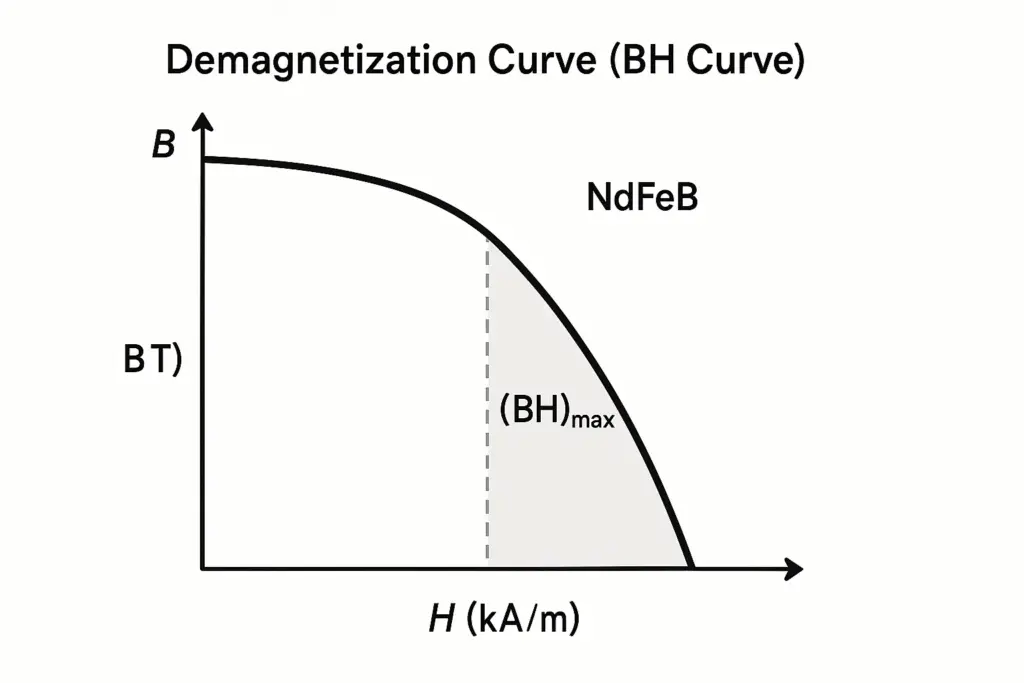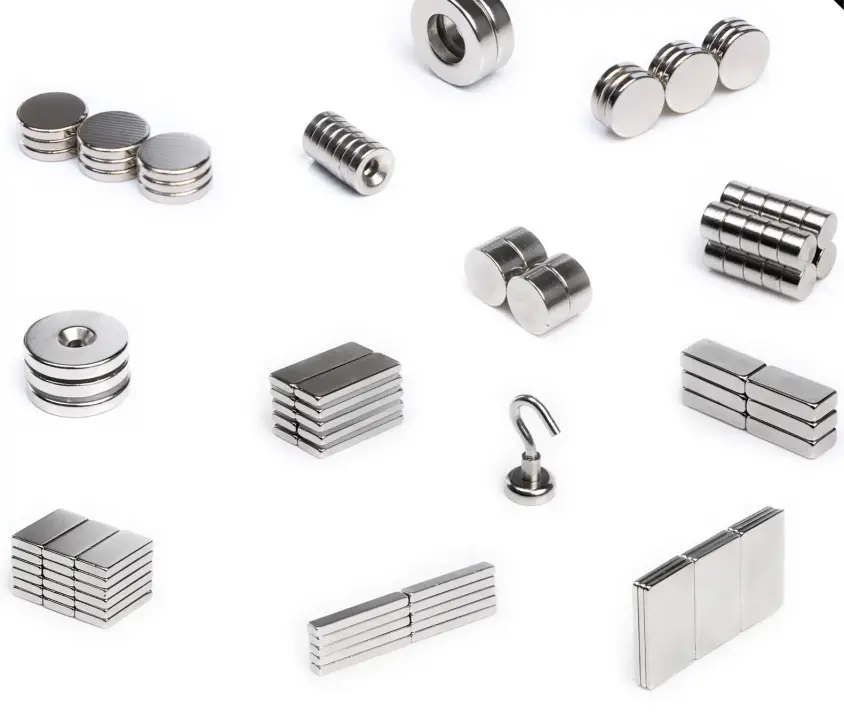When you see designations such as N35, N42, or N52, these numbers represent the grade of a neodymium magnet. The grade indicates the maximum energy product (BH)max, measured in MGOe, which reflects the strength of the magnet.
- Higher numbers (e.g., N52) indicate stronger magnets at room temperature.
- Lower numbers (e.g., N35) are less powerful but more cost-effective.
Understanding these ratings is the first step in choosing the right magnet for your application.
How Are Neodymium Magnet Grades Determined?
The grade of a magnet is directly influenced by its manufacturing process:
- Raw Material Ratio – Neodymium, iron, and boron are blended in specific proportions.
- Melting and Alloying – Elements are melted into an alloy that influences final strength.
- Powdering and Mixing – Controlled mixing ensures consistency in magnetic properties.
- Compression and Sintering – Determines density and energy capacity.
Each step impacts the final BH curve of the magnet, ultimately defining its N rating.
Common N Grades and Temperature Ratings
Different industries require magnets that perform reliably under specific conditions. Neodymium magnets are available in a wide range of grades, each with corresponding maximum operating temperatures:
- N35–N52: Standard grades, ideal for room temperature use.
- M, H, SH Grades: Withstand 100°C–150°C.
- UH, EH Grades: Suitable for 180°C–200°C.
- AH Grades: Can perform up to 220°C.
This makes grade selection critical for industries such as automotive, renewable energy, electronics, and medical equipment.

Which Grade Should You Choose?
Selecting the right grade depends on the application requirements:
- Maximum Strength at Room Temperature → N52
- Balanced Performance and Cost → N42 (widely used across industries)
- High-Temperature Environments → UH or EH grades (reliable up to 200°C)
👉 For example:
- A motor manufacturer may prefer N42 for efficiency and cost balance.
- A medical device company may choose N52 for miniaturization.
- A renewable energy system may require EH grades for long-term heat resistance.
Understanding the BH Curve
The BH curve (demagnetization curve) is a crucial tool for engineers:
- It shows how the magnet performs under different external conditions.
- The maximum energy product (BH)max represents the magnet’s potential strength.
By analyzing the BH curve, manufacturers can recommend the most suitable grade for your technical requirements.

Customization Options
At HSMagnet, we provide customized neodymium magnets based on your:
- Desired grade (N35 to N52, M/H/SH/UH/EH/AH)
- Required size and shape
- Temperature tolerance for demanding environments
This ensures you receive a solution that is tailored to your industry needs.
Conclusion
Choosing the right neodymium magnet grade is a balance of strength, temperature resistance, and cost efficiency. For most applications, N42 offers excellent all-around performance, while N52 is best for maximum strength. High-temperature grades like EH and AH are essential for demanding industrial applications.
📩 Contact HSMagnet today for expert advice and custom solutions to match your project requirements.


Leave a Reply